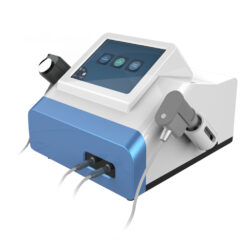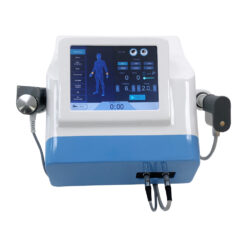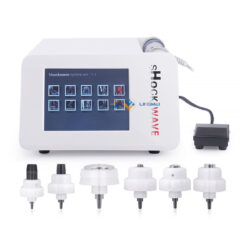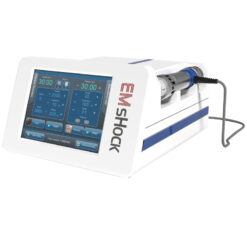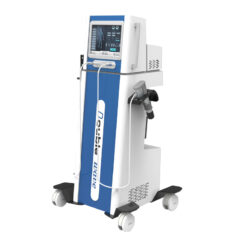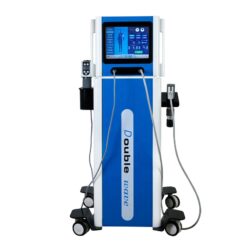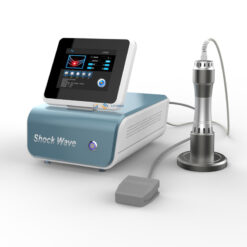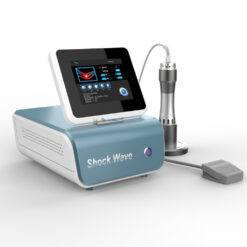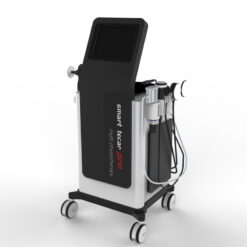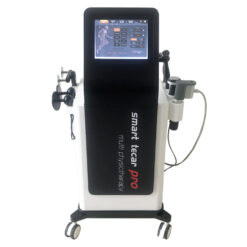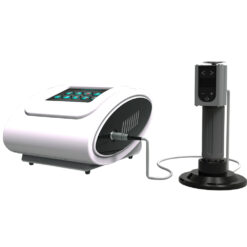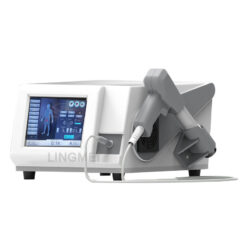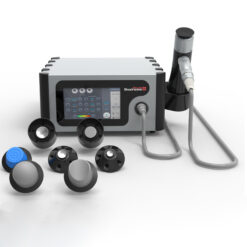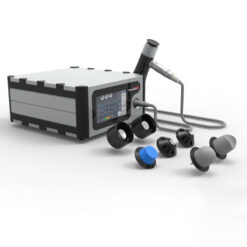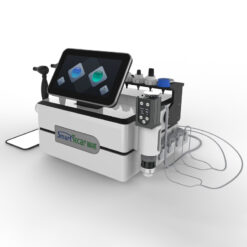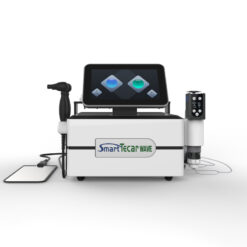Extracorporeal Shock Wave Therapy (ESWT) is a medical treatment that uses shock waves, which are high-energy sound waves, to treat various musculoskeletal and soft tissue conditions. It is a non-invasive procedure that has been used to manage pain and promote healing in specific medical conditions. ESWT devices generate shock waves that are directed toward the affected area of the body, where they stimulate tissue repair and regeneration.
ESWT is commonly used for the following conditions:
- Plantar Fasciitis: It can help alleviate heel pain caused by plantar fasciitis, a common condition characterized by inflammation of the tissue connecting the heel bone to the toes.
- Tennis Elbow (Lateral Epicondylitis): ESWT can be used to treat the pain and inflammation associated with tennis elbow, a condition that affects the tendons in the forearm.
- Calcific Shoulder Tendinopathy: This therapy can break up calcium deposits in the shoulder tendons, reducing pain and improving mobility.
- Achilles Tendinopathy: ESWT can help manage pain and promote healing in the Achilles tendon, which connects the calf muscles to the heel bone.
- Chronic Pain: It has been explored as a treatment option for chronic pain conditions like myofascial pain syndrome and chronic pelvic pain.
It’s important to note that ESWT is typically considered after conservative treatments like physical therapy, rest, and medication have failed to provide relief. The procedure is generally safe, but there can be side effects such as temporary pain or discomfort at the treatment site.
Before undergoing ESWT, it’s essential to consult with a healthcare professional who can assess your condition and determine whether ESWT is a suitable treatment option for you. They can provide guidance on the potential benefits and risks associated with the therapy and help you make an informed decision about your treatment plan.
Here’s a general overview of how ESWT is typically administered:
- Consultation and Evaluation: Before undergoing ESWT, you’ll have an initial consultation with a healthcare provider. During this consultation, your provider will assess your medical history, perform a physical examination, and may conduct diagnostic tests (such as imaging studies) to determine the precise location and severity of your condition. They will also discuss your symptoms, treatment goals, and any previous treatments you’ve tried.
- Treatment Planning: If ESWT is deemed appropriate for your condition, your healthcare provider will create a treatment plan tailored to your specific needs. This plan will outline the number of ESWT sessions required and the interval between sessions.
- Preparation for Treatment: On the day of the treatment, you will typically be asked to wear suitable clothing that allows access to the affected area. For example, if you’re receiving ESWT for plantar fasciitis, you may need to expose your foot.
- Positioning: You will be positioned in a way that allows the healthcare provider to target the shock waves precisely to the affected area. Depending on the condition being treated, you may need to lie down, sit, or assume a specific posture.
- Gel Application: A gel or coupling medium is applied to the skin over the treatment area. This gel helps transmit the shock waves effectively and prevents air gaps between the device and the skin.
- ESWT Device: The healthcare provider will use an ESWT device that generates shock waves. The device is applied to the skin over the affected area. The shock waves are then delivered to the targeted tissues.
- Shock Wave Delivery: The shock waves are typically administered in a series of pulses. You may feel a tapping or snapping sensation during the procedure, but it should not be overly painful. The intensity and duration of the treatment will depend on your specific condition and the ESWT device used.
- Post-Treatment Care: After the ESWT session, your healthcare provider may provide instructions for post-treatment care. This may include rest, ice application, or other recommendations to manage any potential discomfort or side effects.
- Follow-Up: Depending on your treatment plan, you may require multiple ESWT sessions. Follow your provider’s recommendations regarding the timing and number of sessions.
- Monitoring Progress: Your healthcare provider will monitor your progress throughout the course of treatment to assess the effectiveness of ESWT and make any necessary adjustments to your treatment plan.
It’s crucial to follow your healthcare provider’s instructions carefully and attend all scheduled appointments for ESWT. Additionally, discuss any concerns or questions you have about the procedure with your provider to ensure you have a clear understanding of what to expect and how to care for yourself during and after treatment.
Is Extracorporeal Shockwave Therapy Safe?
ESWT is a non-invasive treatment, and therefore, the risk of complications is very low. The most common side effects are pain and hypersensitivity at the treatment site. However, these symptoms are usually self-limited and resolve over time. If ESWT is not successful, then the original pain in the area may persist.







